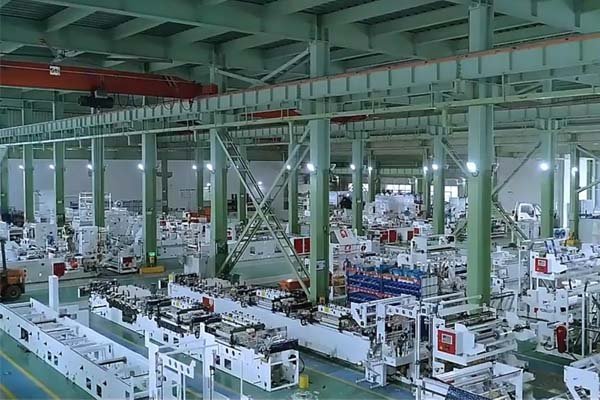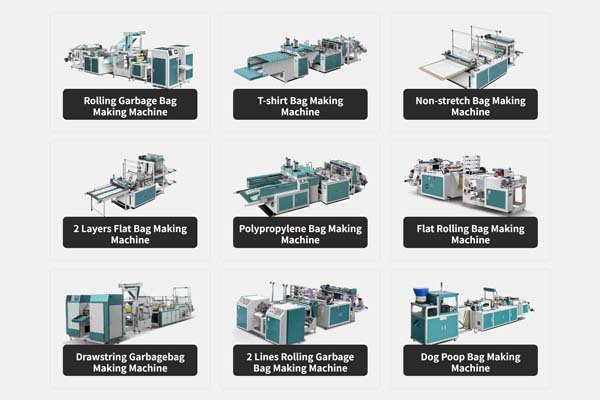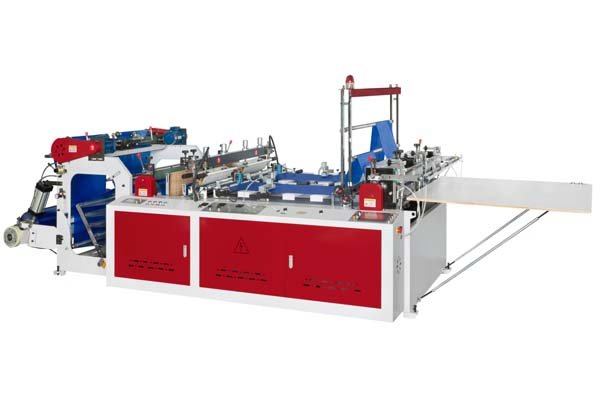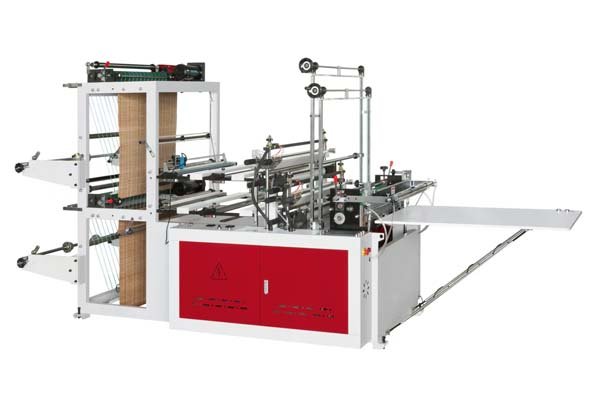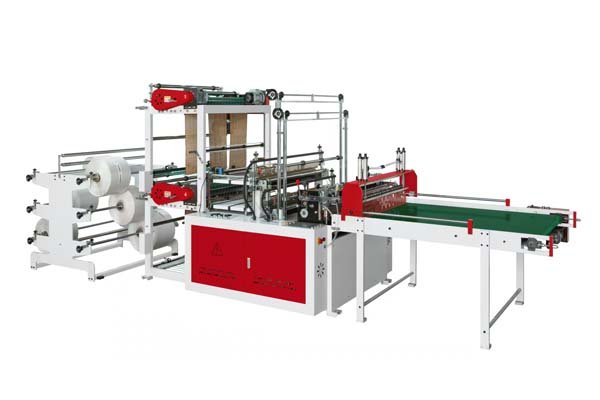
Choosing the wrong blow-up ratio (BUR) can ruin your entire film production. This leads to weak bags and wasted material. The key is matching the BUR to the specific application.
The right blow-up ratio (BUR)1 depends on the desired film properties. Use a lower BUR (1.5:1 to 2.5:1) for strength-critical applications like heavy-duty bags2. Use a higher BUR (2.5:1 to 4:1) for general-purpose films like T-shirt bags3.
At BagMec®, we have over seven years of experience helping clients optimize their production. The blow-up ratio is the ratio between the diameter of the film bubble and the diameter of the extruder die. This ratio is very important because it determines the molecular orientation of the film. A higher BUR stretches the plastic more in the transverse (cross) direction, which balances the film's strength. A lower BUR keeps more strength in the machine (pull) direction. So, the choice directly impacts the final bag's tear resistance, tensile strength, and overall performance.
For example, a customer producing heavy garbage bags needs maximum strength to prevent punctures and tears from heavy loads. We would guide them to use a lower BUR. This ensures the film is strongest in the direction it's being pulled and lifted. But a client making lightweight T-shirt bags needs a balance between strength and producing as much film as possible from the raw material. For them, a higher BUR is more efficient. We build our machines to handle this full range. Our patented "Smart Tension Control" system adapts to different film tensions that result from these BUR adjustments.
What is the optimal blow-up ratio for T-shirt bags vs. heavy-duty bags?
Are you producing both retail shopping bags and industrial-use bags? You cannot use the same settings for both. The optimal blow-up ratio is completely different for each.
For T-shirt bags, the optimal Blow-Up Ratio is typically between 3:1 and 4:1. This balances film strength and material yield. For heavy-duty bags, a lower BUR of 1.5:1 to 2.5:1 is best to maximize puncture and tear resistance.

Let's dive deeper into why these applications demand such different approaches. It all comes down to the job the bag is designed to do.
The Engineering Behind T-Shirt Bags
T-shirt bags need to be lightweight, thin, and economical to produce in very high volumes. The goal here is efficiency.
A higher BUR of 3:1 to 4:1 achieves a few things:
- Balanced Properties: It orients the polymer molecules in both the machine direction (MD) and transverse direction (TD). This gives the bag decent all-around strength, so it doesn't tear easily from the handle or the body.
- High Yield: A wider bubble means you get a wider film from the same amount of plastic, making each bag cheaper to produce.
- Speed: This balance allows machines like our BagMec® T-Shirt Bag Making Machine to run at high speeds, producing up to 1,200 bags per hour without sacrificing integrity.
The Science of Heavy-Duty Bags
Heavy-duty bags, like those used for construction debris, industrial waste, or agricultural products, have one primary job: containment. Strength is the most important factor.
A lower BUR of 1.5:1 to 2.5:1 is necessary because:
- Maximum Machine Direction (MD) Strength: Less sideways stretching keeps the polymer chains aligned in the direction of pull. This gives the film exceptional resistance to tearing and puncturing, which is essential for containing sharp or heavy objects.
- Toughness: The film is thicker and more robust. This is why our Heavy Duty Bag Machines ($12,000-$23,000) are built with high-carbon steel components to handle the higher stress of producing this type of film.
Here is a simple table to compare them.
| Feature | T-Shirt Bag | Heavy-Duty Bag (e.g., Garbage Bag) |
|---|---|---|
| Primary Use | Retail, lightweight goods | Industrial waste, heavy materials |
| Recommended BUR | 3:1 to 4:1 | 1.5:1 to 2.5:1 |
| Key Film Property | Balanced MD/TD Strength & Yield | High MD Tear & Puncture Resistance |
| Typical Material | HDPE | LDPE/LLDPE Blends |
| BagMec® Machine | T-Shirt Bag Making Machine | Heavy Duty Bag Machine |
How does material type (LDPE, HDPE, LLDPE) affect the ideal blow-up ratio?
The plastic resin you choose is a critical piece of the puzzle. You cannot set your BUR without considering your material. Each polymer behaves differently when blown.
HDPE, a stiffer material, works best with a higher BUR (3:1 to 5:1) for a stable bubble. More flexible materials like LDPE and LLDPE are better suited to a lower BUR (2:1 to 4:1) to maximize their natural toughness and strength.
The molecular structure of each plastic dictates how it responds to being stretched. Understanding this helps us, and our customers, avoid production problems.
Working with HDPE (High-Density Polyethylene)
HDPE has a very linear molecular structure with minimal branching. This makes the material stiff and strong, but it can also be prone to splitting if not handled correctly.
- Why a Higher BUR? A higher blow-up ratio helps to "relax" the material in the transverse direction. This creates a more stable bubble and prevents the film from becoming too brittle. It's ideal for producing the thin, crisp film used in many shopping bags. Our machines are designed to run HDPE smoothly.
Optimizing for LDPE and LLDPE
LDPE (Low-Density Polyethylene) and LLDPE (Linear Low-Density Polyethylene) have more branched molecular structures. This makes them much more flexible and gives them excellent puncture and tear resistance.
- Why a Lower BUR? To take full advantage of this natural toughness, a lower BUR is often used. This preserves the film's strength, especially for demanding applications like courier bags or food packaging that needs to withstand rough handling. A great example is the custom heavy-duty courier bag line we built for an Indian logistics giant. It processes tough LLDPE blends to produce tear-resistant bags at 2,500 units per hour.
A Note on Specialty and Biodegradable Materials
New materials require new parameters. Biodegradable plastics like PLA (Polylactic Acid) are becoming more common.
- PLA Requirements: PLA is more heat-sensitive and brittle than traditional plastics. It requires a very low and carefully controlled BUR, along with precise temperature management, to prevent it from tearing during production. This is a challenge we solved when we co-developed a machine for a US eco-brand. We helped them produce 100% compostable PLA shopping bags, showcasing our ability to innovate for sustainability.
How can I troubleshoot common issues related to the blow-up ratio?
Your film production is running, but something is wrong. Your bubble is unstable, or the film tears easily. Very often, the blow-up ratio is the cause.
If the film bubble is unstable, your BUR is likely too high. Reduce the airflow. If the film tears easily in the cross-direction, your BUR is too low. Increase the airflow to stretch the film more and balance its strength.
Troubleshooting these issues quickly is essential to minimize downtime and material waste. As a manufacturer with a 5-stage inspection protocol and a 72-hour continuous stress test on every machine, we design our equipment to be stable. But a wrong setting can cause problems on any machine. Here are some common issues and how to fix them.
| Problem | Likely Cause (BUR-related) | Solution | The BagMec® Advantage |
|---|---|---|---|
| Unstable or "Breathing" Bubble | BUR is too high for the material or die settings. | Reduce the airflow to the die head. Check that your die gap is consistent all the way around. | Our machines have precision-engineered air rings that provide uniform cooling for a very stable bubble. |
| Film Tears Easily Sideways (TD) | BUR is too low. The film lacks cross-directional strength. | Increase airflow into the bubble. This will stretch the film more in the transverse direction and balance the molecular orientation. | Our "Smart Tension Control" patent ensures the film feed remains stable even as you adjust the bubble size. |
| Wrinkling Before Nip Rollers | The bubble is not fully cooled before it is collapsed. This can be worse with a very large BUR. | Increase cooling from the air ring. You may also need to slightly reduce your production line speed. | We can help diagnose these issues remotely with our IoT-enabled machines, protecting your uptime like we did for our German client, who now sees 99% uptime. |
| Inconsistent Film Thickness | An issue with the die or uneven cooling. | Check the die for any blockages. Ensure the air ring is providing even airflow around the entire bubble. | Every machine we ship undergoes laser calibration of its components to ensure precision from day one. |
Conclusion:
Choosing the right blow-up ratio is a critical skill. It requires balancing your product's application with your material choice. With the right machine and expertise, you can perfect this process for quality results. We are here to provide both.
-
Understanding BUR is crucial for optimizing film production and ensuring the right properties for different applications. ↩
-
Learn about the specific requirements and techniques for producing heavy-duty bags to ensure maximum strength and durability. ↩
-
Explore the unique properties and production techniques of T-shirt bags to enhance your manufacturing process. ↩

